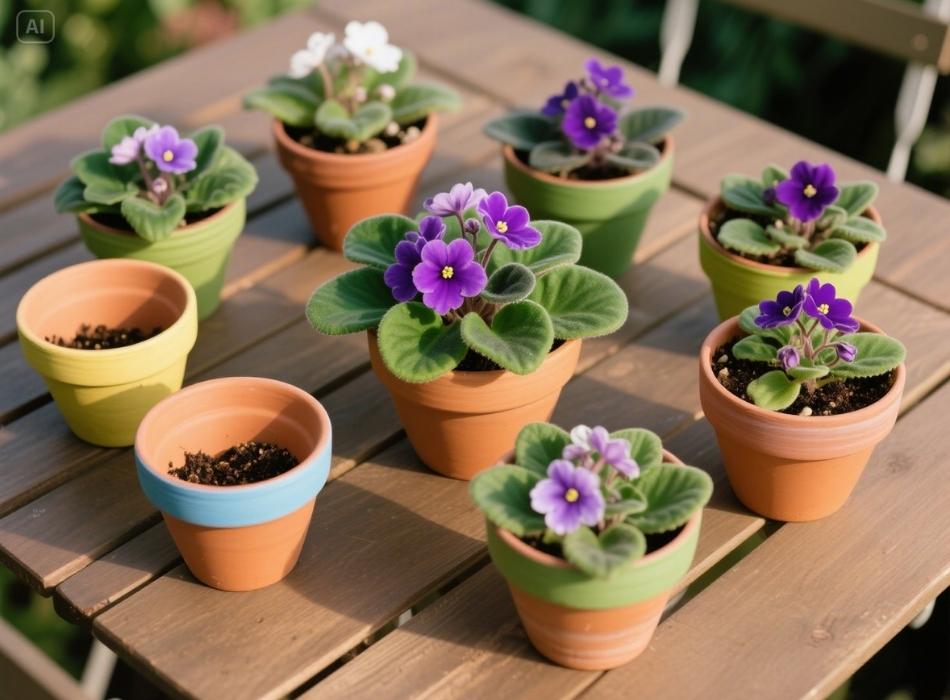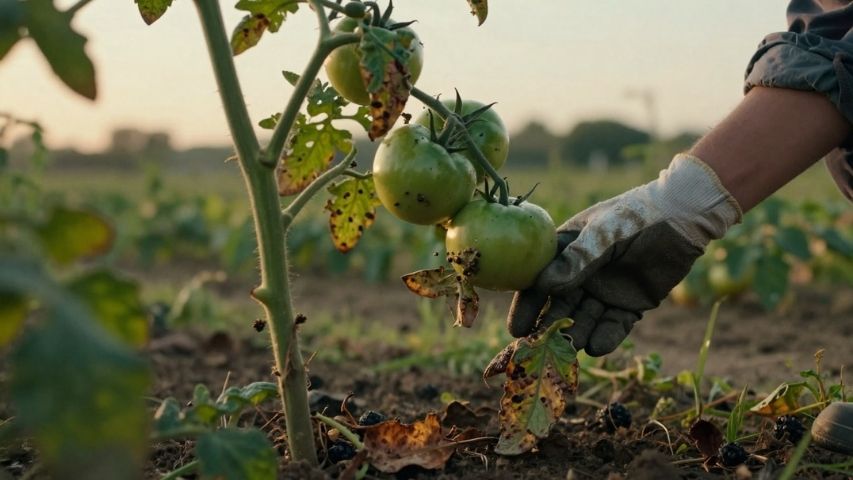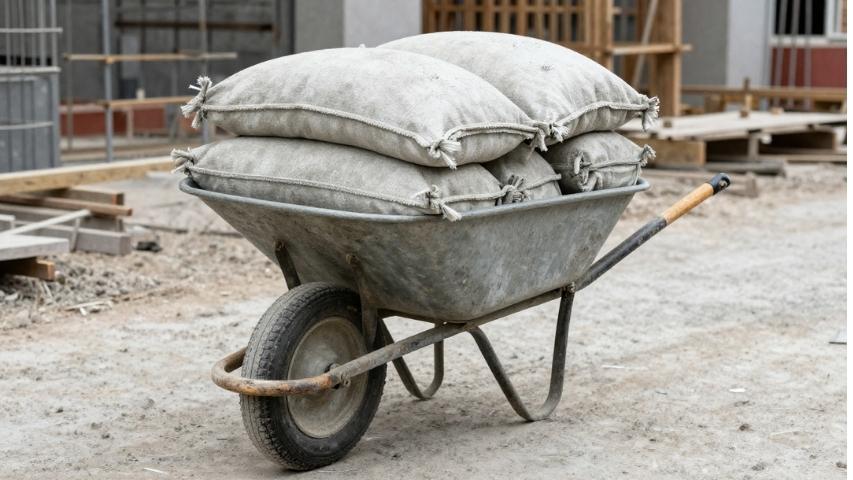African violets are among the most beloved houseplants, bringing vibrant splashes of color and a touch of elegance to homes worldwide. But to help these delicate plants truly thrive, your chosen pot type is critical. Many growers overlook how significant pots are to African violets’ health, growth, and longevity.
You’re in the right place if you’ve been wondering about the right pot for your African violets. This guide will walk you through everything you need to know about selecting pots, from materials to size, drainage tips, and even the aesthetics that accentuate your home’s style while keeping your plants happy.
Why the Right Pot Matters for African Violets
Regarding African violets, the pot is more than just a decorative container. It directly impacts the plant’s hydration, root development, and blooming potential. Here’s why it matters:
- Moisture Control: African violets have sensitive roots that can suffer from overwatering or having “wet feet.” Choosing a pot with proper drainage helps prevent root rot and ensures the soil remains moist enough.
- Controlled Growth: These plants thrive in slightly smaller pots with snug roots, which encourages more blooms. Using the wrong-sized pot could hinder blooming and growth.
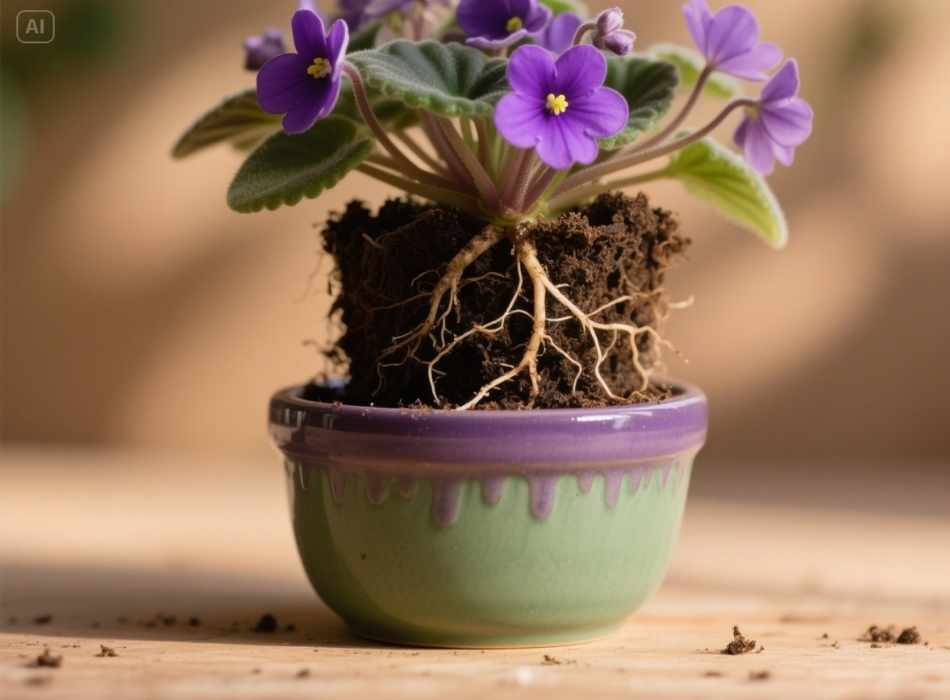
- Health and LongevityHealth and Longevity: A well-selected pot promotes proper aeration, balanced moisture, and healthy root systems, ensuring your African violets thrive for years. The correct pot size prevents the soil from becoming too wet and suffocating the roots while providing enough room for the plant to grow.
- Aesthetic Appeal: With a wide range of colors, materials, and designs, choosing the right pot can complement or enhance your African violet’s beauty. Whether you prefer a classic terracotta pot or a modern ceramic one, there are endless options to suit any style or preference.
- Practicality: Pots also serve as functional containers for your plants. They not only hold soil and provide a stable base for your African violets but also help prevent accidental water spillage and messes on surfaces.
- VersatilityVersatility: While African violets are commonly grown in pots, they can also be planted in other containers such as hanging baskets or self-watering planters. This makes them a versatile choice for any indoor gardening setup.
- Drainage: Proper drainage is essential for the health of your African violet, and choosing the right pot plays a crucial role. Look for pots with drainage holes to allow excess water to escape and prevent root rot.
- Size: When selecting a pot for your African violet, consider its size and potential growth. A pot that is too big may cause the soil to stay wet for extended periods, while a small pot may stunt the plant’s growth.
- StyleStyle: As mentioned before, African violets prefer slightly cramped conditions, so choosing a smaller pot with a broader base is recommended. This will also help prevent the plant from tipping over as it grows.
- Material: Pots come in various materials, such as plastic, ceramic, and terracotta. Each material has its advantages and disadvantages. For example, plastic pots are lightweight and retain moisture well, but they may not be the most aesthetically pleasing choice for indoor décor. Ceramic pots are more decorative but tend to hold onto water longer, while terracotta pots allow for excellent drainage but can dry out quickly.
- By understanding these basics, you’re already closer to giving your plants the care they deserve.
Key Factors to Consider When Choosing African Violet Pots

Material Matters
The material plays a significant role when selecting a pot for your African violets. Here are the popular choices and their pros and cons:
Terracotta Pots
Terracotta is a classic choice for plant lovers. These porous clay pots allow air and moisture to pass through, making them great for preventing overwatering. However, they dry out quickly and may need more frequent watering.
- Pros: Great aeration, promotes healthy roots.
- Cons: Dries out faster, may not suit neglectful waterers.
Ceramic Pots
Ceramic pots, mainly glazed ones, are an excellent alternative. They retain moisture more effectively than terracotta but might lack aeration without adequate drainage holes.
- Pros: Holds moisture well, aesthetically pleasing.
- Cons: May not breathe as well and can be heavy.
Plastic Pots
Lightweight and affordable, plastic pots are practical for those who want low maintenance. They retain moisture well but require careful attention to avoid waterlogging.
- Pros: Lightweight, retains moisture, and is budget-friendly.
- Cons: Less breathable, can cause root issues if drainage is poor.
Self-Watering Pots
These pots are perfect for African violets, removing the guesswork from watering. Many self-watering containers include a wick system that delivers just the right amount of water.
- Pros: Prevents overwatering and low maintenance.
- Cons: Higher cost; it might take time to find the perfect system for your plant.
Pot Size Is Key
If there’s one rule to remember, it’s that African violets thrive in smaller pots. A good rule of thumb is to choose a pot with a diameter that’s one-third the size of the plant’s leaf span.
- Small Pots (2-3 inches): Ideal for young African violets or starter plants.
- Medium Pots (4-5 inches): Suitable for mature violets that have grown significantly.
- Large Pots (6 inches and above): These are used for oversized or specialty varieties, though oversized pots should generally be avoided for standard violets.
Using a pot that’s too large can result in soggy soil and poor blooming. Smaller pots encourage root growth and healthy flowering.
Drainage Is Non-Negotiable
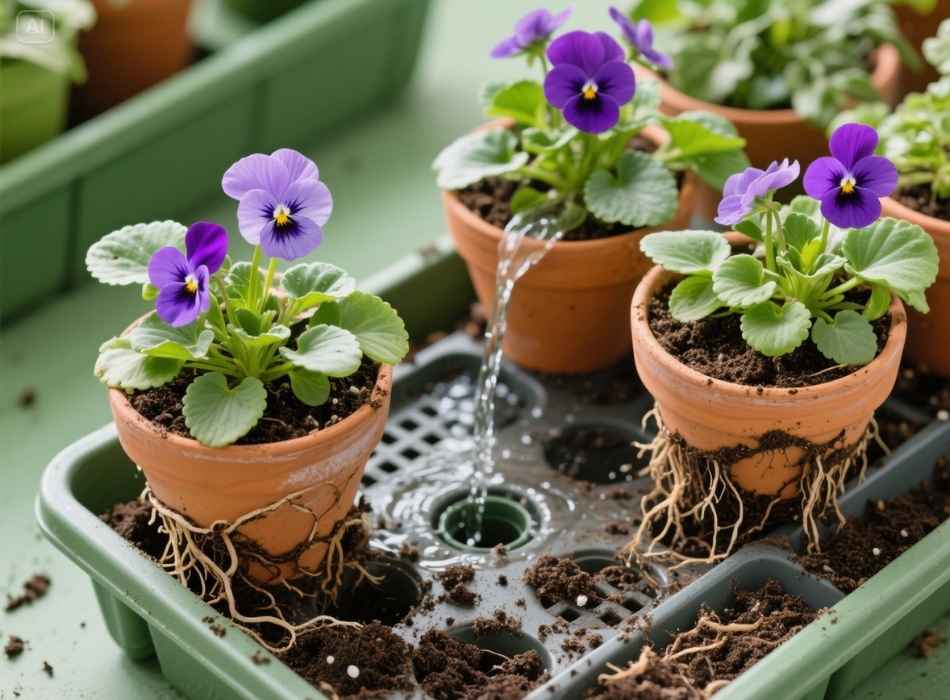
African violets hate standing water. Without proper drainage, they’re susceptible to root rot and fungal infections. Here are some must-have drainage tips:
- Ensure the pot has at least one well-sized drainage hole.
- Use a saucer or tray to catch excess water if the pot lacks a separate holder.
- Double-check the wick mechanism for self-watering systems and ensure it evenly distributes water.
- Avoid keeping the pot in a dish that collects excess water or allows for stagnation.
- Use a layer of rocks at the bottom of the pot to improve drainage if necessary.
In addition to these tips, another way to help with drainage is to use a well-draining soil mix. This means avoiding traditional potting soils, which tend to be too dense and can lead to poor drainage. Instead, opt for a specialized African violet mix or make your own by combining equal parts peat moss, vermiculite, and perlite.
Proper Watering Techniques
Another crucial aspect of African violet care is proper watering. These plants are sensitive to overwatering and underwatering, so finding the right balance is key.
When watering your African violets, it’s important to always use room-temperature water. Cold water can shock the plants and cause damage, while hot water can scald their roots. It’s also important to avoid getting water on the leaves, as this can cause spots and lead to disease.
To ensure that you’re not over- or under-watering your African violets, it’s helpful to check the moisture level of the soil before each watering. Stick your finger about an inch deep into the soil—if it feels dry, it’s time to water. If it still feels moist, wait a day or two before checking again.
Repotting African Violets and Choosing the Right Timing
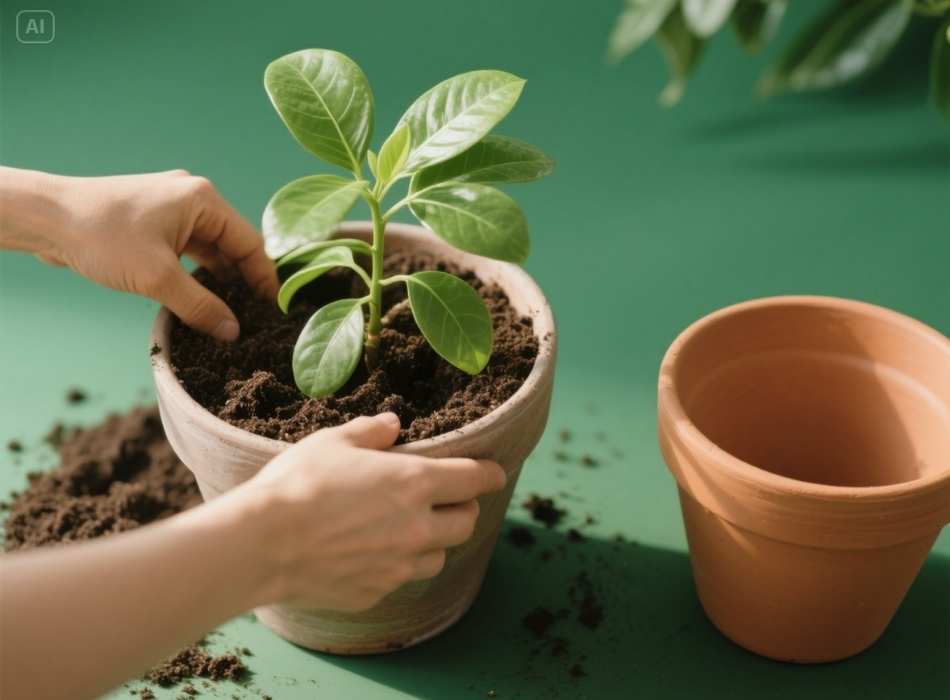
Even with the perfect pot, your plant needs repotting approximately every 6-12 months. Here’s why repotting is essential:
- It prevents soil compaction that can hinder root growth.
- Replenishes nutrients in the soil mix.
- Allows you to trim and manage overgrown roots.
When repotting, always gradually increase the size. Overpotting can stress your plant, as African violets tend to prefer their roots slightly pot-bound.
Aesthetic Considerations
Of course, pots aren’t just functional; they also contribute to your home décor. Match the beauty of your African violet with a pot that complements the plant and your interior style.
Here are some suggestions for pairing aesthetics with functionality:
- Modern Spaces: Sleek, white ceramic or matte-finished plastic pots.
- Rustic or Boho Looks: Textured terracotta or earthy ceramic designs.
- Minimalist DécorMinimalist Décor: Simple self-watering pots in neutral shades.
- Vintage Vibes: Brass or copper planters or repurposed old tin cans.
- Colorful Accents: Vibrant, hand-painted pots in playful patterns.
- Succulent Gardens: Shallow, wide pots with drainage holes for proper drainage.
Pot Maintenance
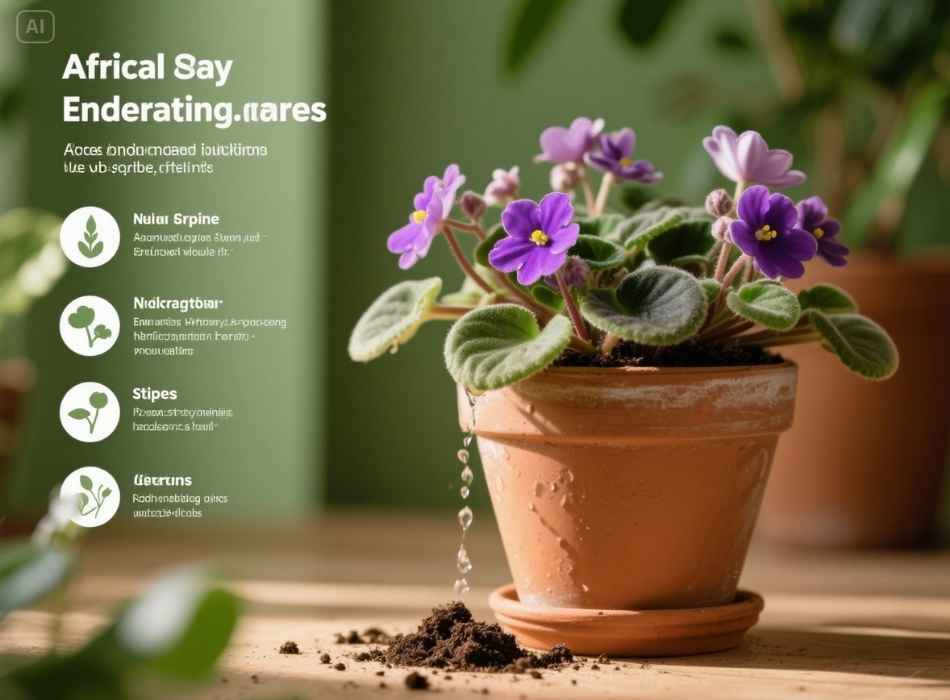
While African violets may seem like low-maintenance plants, it’s essential to properly care for your pot to ensure the health and longevity of your plant. Here are some tips for maintaining your pot:
- Avoid harsh chemicals on your pot, as they can damage the material and potentially harm your plant.
- Clean the inside of your pot every 6 months to prevent a build-up of mineral deposits and fungus that can cause root rot.
- When repotting, use a pot slightly larger than the previous one to allow room for growth.
- Always use fresh potting soil when repotting to ensure your plant has access to proper nutrients.
Mix and match different containers to create an eye-catching plant display while ensuring all your pots meet the functional needs of African violets.
Join the African Violet Community
Becoming an African violet enthusiast is more about connecting with other plant lovers than growing these stunning flowers. Share your experiences, get tips, and show off your favorite pots in communities or local violet clubs.
If you’d like more advice on caring for African violets beyond picking the perfect pot, explore our detailed guides or sign up for our newsletter for regular tips from experts.
Grow Happy Violets
Finding the ideal pot for your African violets might seem like a small detail, but it’s one of the most crucial steps to ensuring their health, longevity, and beautiful blooms. Every element matters, from the material you choose to the size, drainage, and even the design.
If you’re just starting out, don’t be afraid to experiment and learn. After all, the best way to grow thriving African violets is to pay close attention to what they need and adapt as you go.







